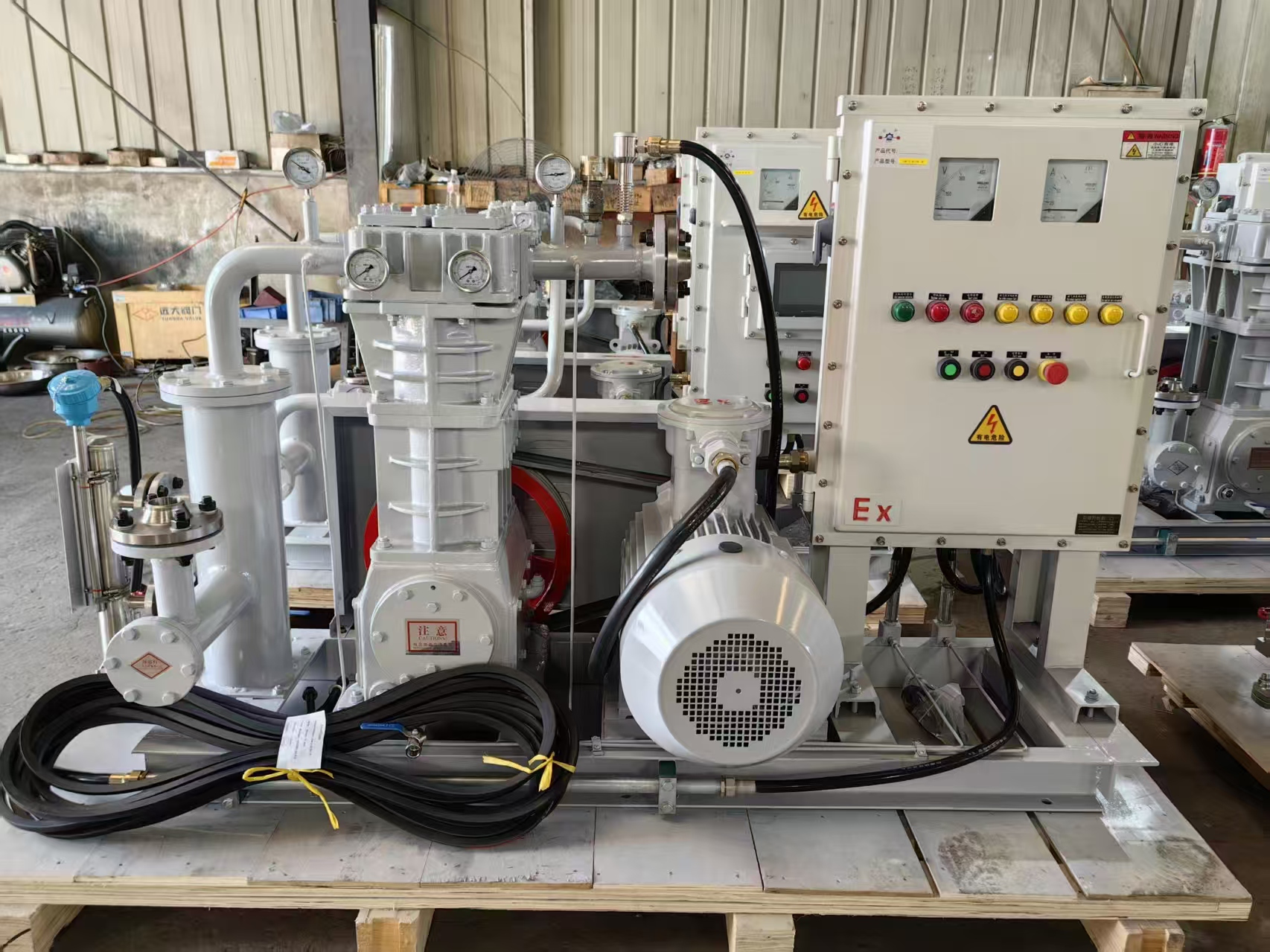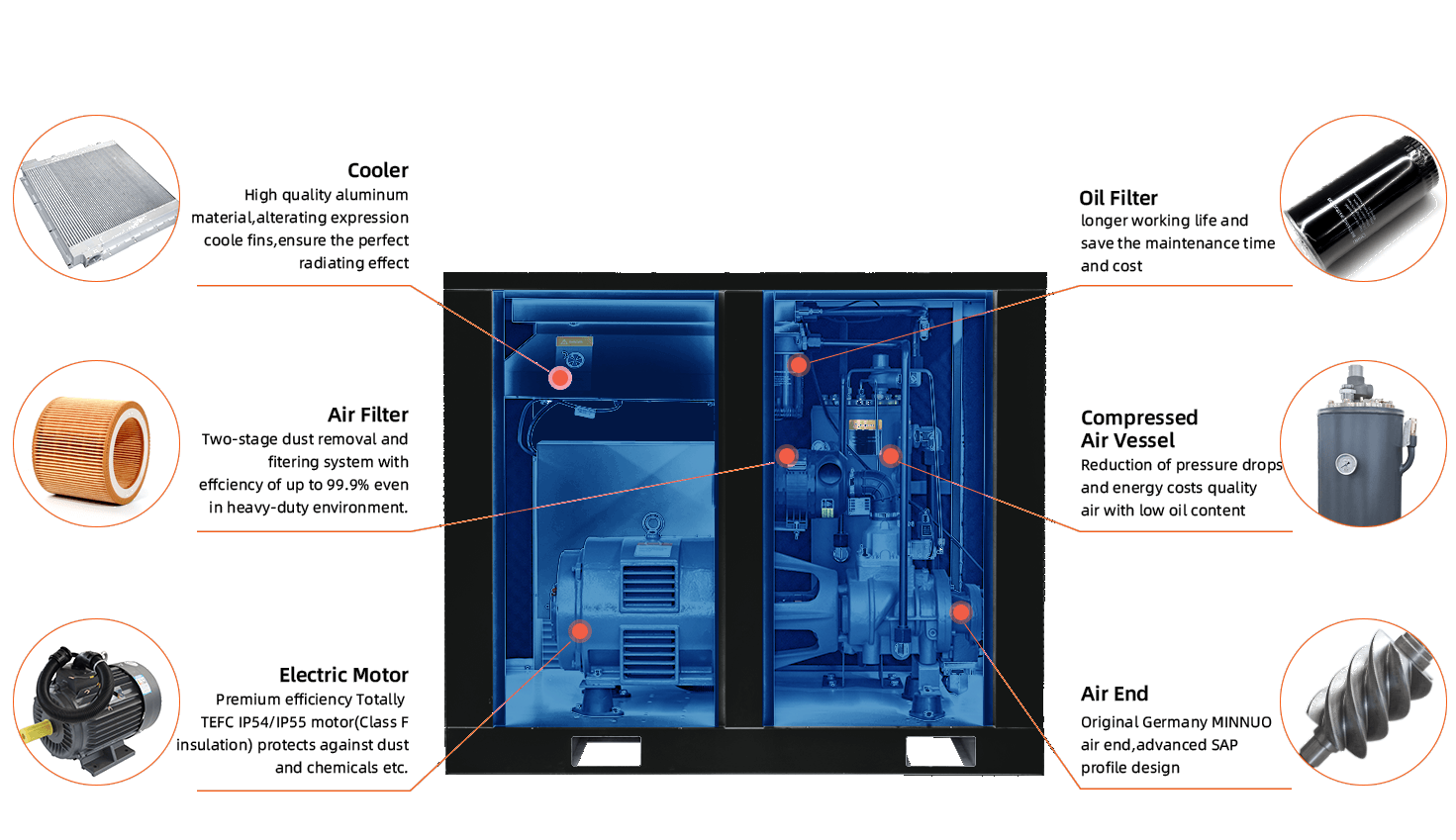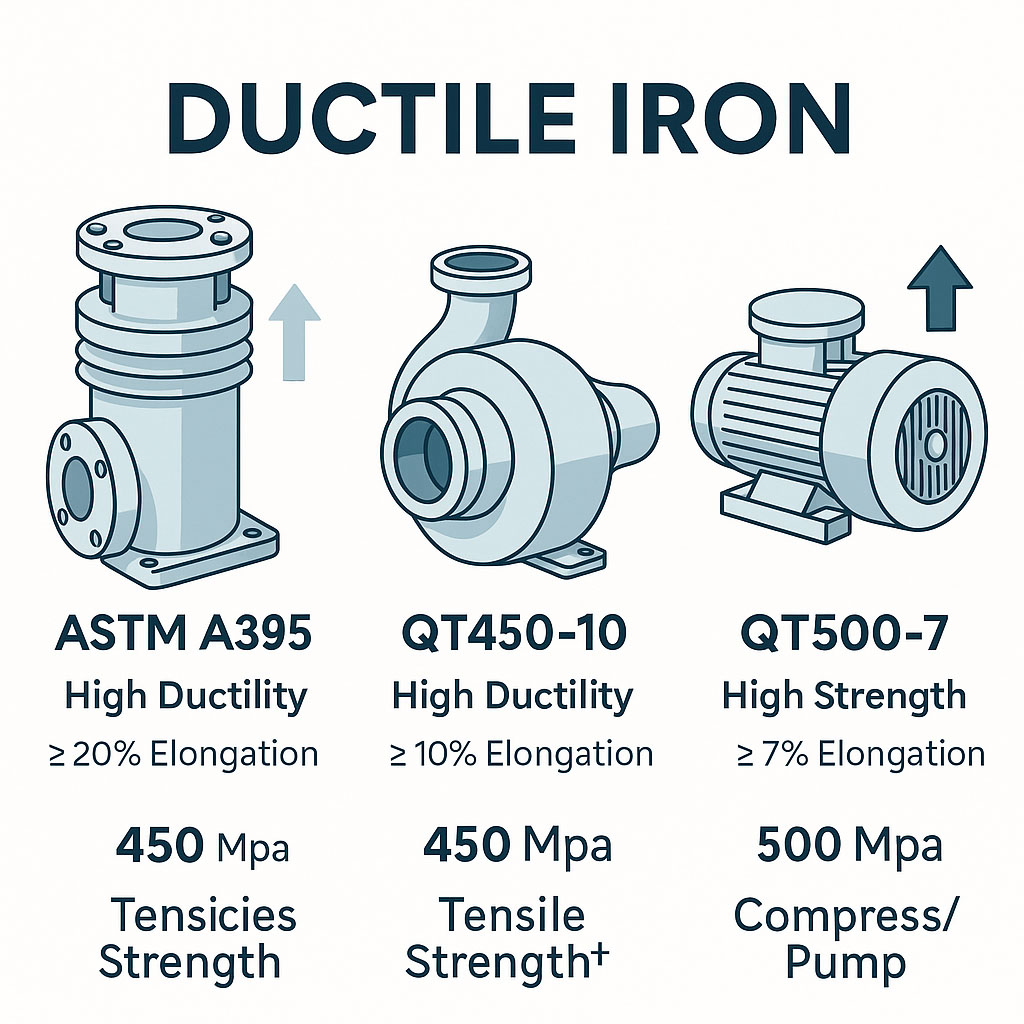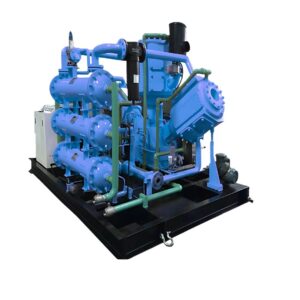Cuando los procesos industriales exigen el suministro de gas a alta presión, compresores alternativos de gas-también llamados compresores de pistón- suelen ganarse sus galones. A diferencia de las unidades de tornillo, destacan por sus altas relaciones de compresión, su funcionamiento eficiente fuera de diseño y la versatilidad del tipo de gas. Pero para elegir el modelo adecuado hay que sopesar la tecnología, el tamaño, los materiales y las necesidades de mantenimiento.
1. Reciprocante vs Tornillo: Conozca su tecnología
-
Capacidad de presión: Los compresores alternativos suministran presiones mucho más altas (a menudo superior a 1.200 PSI o ~80 bar), mientras que los compresores de tornillo se limitan generalmente a ~250-600 PSIG
-
Ciclo de trabajo y ruido: Los compresores de tornillo ofrecen funcionamiento continuo y más suave y silencioso. Los grupos alternativos realizan trabajos cíclicos y generan más vibraciones, aunque funcionan mejor en condiciones de carga parcial. .
-
Aplicación: Los compresores alternativos son ideales para aplicaciones de alta presión, servicio intermitente o montaje sobre patines. compresores industriales de pistón en petróleo y gas, plantas de proceso o líneas de refuerzo de nitrógeno.
🛠 Explorar Keep-Win al completo [gama de compresores alternativos de gas](https://keep-win.com/products/reciprocating-gas-compressors) adaptada a las necesidades de alta presión y múltiples etapas.
2. Dimensionamiento del compresor: Evitar el sobredimensionamiento o el infradimensionamiento
Un dimensionado adecuado garantiza la fiabilidad y la eficiencia energética. He aquí cómo dimensionar correctamente:
-
Definir requisitos de proceso claros: Determine el caudal necesario (CFM/Nm³/h) y la presión de descarga. Tenga en cuenta los picos de demanda y los planes de ampliación.
-
Factor de contemporaneidad y margen de seguridad: Para varios usuarios simultáneos, suponga una simultaneidad de 20-30% y añada un factor de seguridad de 25-50% para evitar caídas de presión o subdimensionamiento.
-
Match Duty y diseño de cilindros: La mayoría de los compresores de pistón de una etapa tienen un ciclo de trabajo de 50%, lo que significa que necesitan motores más grandes para enfriarse y evitar el sobrecalentamiento.
Variables clave: PSI/bar necesarios, caudal de aire libre (CFM/Nm³/h), ciclo de trabajo y fuente de energía.
3. Propiedades de los gases y compatibilidad de los materiales
Los compresores alternativos deben adaptarse a las propiedades específicas de los gases, especialmente en el caso de gases agresivos o de alta pureza. Considérelo:
-
Gases corrosivos o abrasivos pueden requerir pistones de acero inoxidable, camisas y materiales especializados para las válvulas.
-
Diseño de la junta deben evitar la contaminación del portador-los sistemas de estanqueidad de dos etapas o empaquetados por purga son esenciales para los gases de pureza crítica o peligrosos.
-
Variantes API 618 son comunes para servicios petroquímicos o criogénicos, construidos con barras de alta resistencia y piezas forjadas.
En Keep-Win, nuestros compresores son personalizables para gases de proceso, entornos de alta corrosión o normas de alta pureza, lo que garantiza su ajuste y fiabilidad en todas las aplicaciones.
4. Pulsaciones, vibraciones y requisitos de cimentación
Los compresores de pistón crean pulsaciones de presión y bucles de vibración si las tuberías y los soportes no se diseñan adecuadamente. Descuidar los frascos de pulsaciones, los soportes, las cimentaciones no aisladas o la precarga del vástago del pistón puede provocar fallos mecánicos o reducir la vida útil de las juntas. Un análisis acústico-mecánico adecuado y el modelado TAPS son pasos típicos para garantizar la integridad a largo plazo.
Keep-Win ofrece diseños de patines API-618 con esquemas de cimentación y supresión de pulsaciones totalmente diseñados para garantizar la fiabilidad en campo.
5. Planificación del mantenimiento: Utilice una lista de comprobación probada
Los compresores alternativos exigen un mantenimiento más práctico, pero realizarlo correctamente garantiza el tiempo de funcionamiento y el ahorro de energía:
Puntos destacados de la lista de comprobación preventiva:
-
Diariamente o antes de empezar: Comprobar el nivel de lubricante, vaciar el condensadoObserve si hay fugas o vibraciones o ruidos inusuales.
-
Semanal: Comprobar la tensión de la correalimpiar los filtros de aspiración, controlar el funcionamiento de la válvula de descarga.
-
Mensual y trimestral: Sustituir filtros de aceitelimpiar los filtros, comprobar la holgura de los cilindros y el par de apriete de la cruceta.
-
Anual: Sustituir anillos de pistón, realizar pruebas de presión de apagado, realizar diagnósticos de vibración de rpm a nivel FAT.
Los compresores Keep-Win se envían con programas de mantenimiento completos, diagramas de piezas y kits de servicio listos para la puesta en servicio de la instalación.
6. Coste del ciclo de vida y fiabilidad
Aunque los compresores alternativos suelen conllevar mayores costes de mantenimiento que las unidades de tornillo, lo compensan con:
-
Largas revisiones espaciadas a lo largo de varios años (bielas, válvulas y anillos diseñados para una larga vida útil).
-
Eficacia de compresión superior cerca de las condiciones nominales
-
Integraciones sencillas para sistemas de varias etapas y varios circuitos de gas
Las unidades de tornillo pueden ahorrar costes de mano de obra, pero para presiones superiores a ~8 bar o ciclos de trabajo con grandes esfuerzos cíclicos, los compresores alternativos suelen ofrecer una mejor economía de ciclo de vida.
7. Funciones de control e integración
Los compresores alternativos modernos incorporan controles inteligentes, descargadores variables y supervisión remota. Busque sistemas que ofrezcan:
-
Carga/descarga o descarga escalonada
-
Instrumentación integrada e integración de PLC
-
Capacidad de detección de fugas y protección contra sobretensiones
Los herrajes KEEPWORD incluyen Módulos preparados para IoT para la supervisión y las alertas en tiempo real, lo que optimiza el mantenimiento y el tiempo de actividad sin necesidad de desplazarse por el terreno.
Cuadro sinóptico: Consideraciones clave sobre el diseño
| Tema | Por qué es importante |
|---|---|
| Presión y caudal | Adaptación a los requisitos del sistema y futuras ampliaciones |
| Tipo de tecnología | Reciprocantes para uso intermitente/alta presión |
| Materiales y diseño de juntas | Evitar problemas de compatibilidad de gases y garantizar la pureza |
| Pulsaciones y cimentación | Mejorar la integridad mecánica y reducir los riesgos de inactividad |
| Planificación del mantenimiento | Siga una lista de comprobación para el mantenimiento diario y anual |
| Coste del ciclo de vida | Favorecer la eficiencia frente al simple precio inicial |
| Controles e integración | Permite el tiempo de actividad mediante una gestión basada en la lógica |
Por qué elegir los paquetes de soluciones de Keep-Win
Keep-Win ofrece Conformidad con API 618 y compresor industrial de pistón desde configuraciones de una a varias etapas. Nuestras unidades incluyen diseño mecánico, mitigación de pulsaciones, módulos de control inteligentes y soporte de mantenimiento documentado. Más información en:
-
[Serie de compresores alternativos de gas](https://keep-win.com/products/reciprocating-gas-compressors)
-
[Paquetes de compresión de gas de proceso](https://keep-win.com/products/process-gas-compressors)
Conclusión
Seleccionar el compresor de gas alternativo significa comprender la presión, el caudal, el tipo de gas, el diseño mecánico y el mantenimiento del ciclo de vida. Si se presta atención al dimensionamiento, las pulsaciones y el mantenimiento, estos compresores ofrecen una eficiencia y fiabilidad inigualables para aplicaciones de alta presión o servicio intermitente.
Para diseñar un sistema que se adapte a las especificaciones exclusivas de su planta, póngase en contacto hoy mismo con el equipo de ingeniería de gas de Keep-Win para obtener recomendaciones personalizadas y una implantación fiable.











